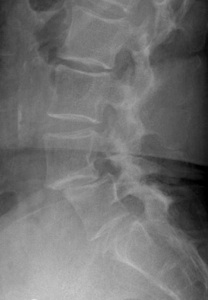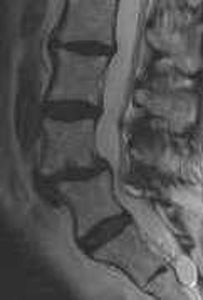Contact ☎ 310.448.7844
TLIF
Transforaminal Lumbar Interbody Fusion: A fusion entails one vertebral body (ex. L4) fusing to another (ex. L5). This provides stability and decreases pain from the facet joints and disc (ex. L4-5) in between the vertebral bodies. The TLIF is a fusion that approaches the spine from the back (posterior), removes a facet joint in order to get access to the disc space thru the foramen (hence “transforaminal”). The disc is removed and replaced with a spacer (typically plastic) and bone graft (or substitute such as BMP). The spacer provides stability, increases the disc height in order to restore alignment, and increases the chance of successful fusion. Pedicle screws are inserted into the bone in order to stabilize the motion segment (ex. L4-5) and increase fusion rate. We insert our pedicle screws under three-dimensional computer navigation which increases the accuracy and safety of the procedure. Ninety-five percent of our patients have had pain reduction with a TLIF procedure with an average pain reduction from preop 9/10 to 2/10 postop.
POSTERIOR FUSION (TLIF PLIF)
Case Study
Here is an example of a patient who underwent a TLIF. She was suffering from back and mainly left leg pain due to spondylolisthesis at L4-L5. She failed conservative management in the form of physical therapy, activity modification, and oral medications. Her pre-op pain was a 9/10. She underwent the TLIF procedure uneventfully and at only two weeks after the procedure her pain is decreased from her pre-op pain.



For a description of the ALIF, please click here
For a description of the XLIF/DLIF, please click here
For a description of the TLIF, please click here
For a description of the PLIF, please click here
We prefer a TLIF to a PLIF because we think it requires less nerve root retraction and is safer for the patient. They are very similar procedures, both done from the back.
